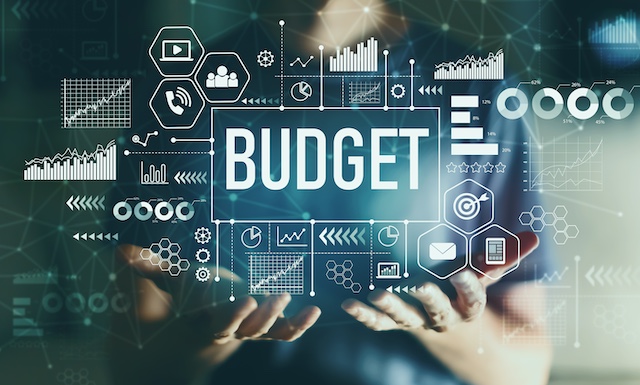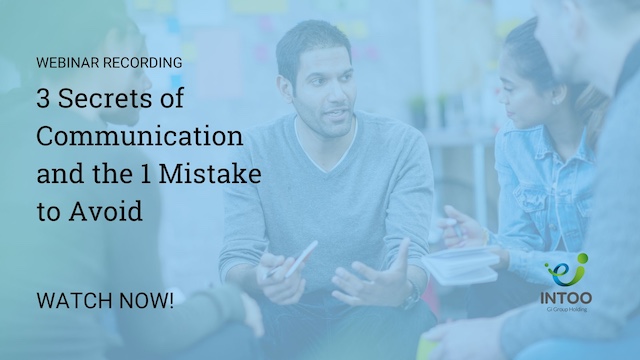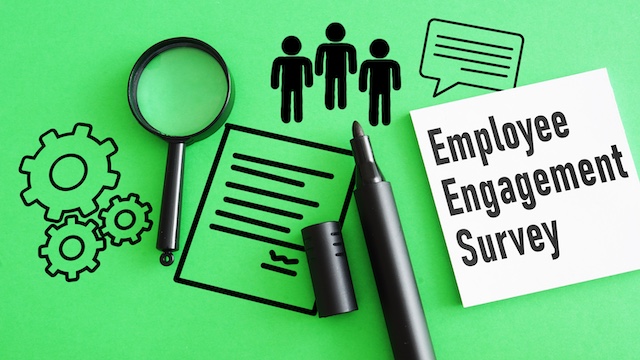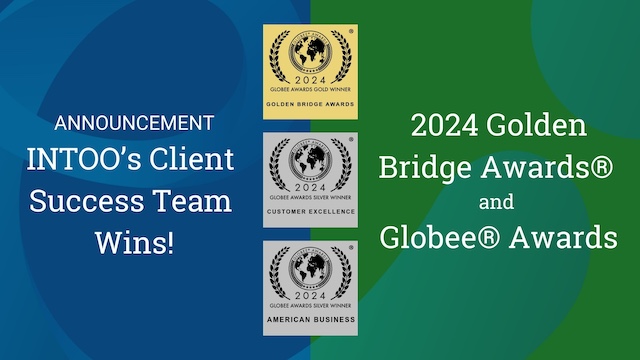An employee development plan, also known as EDP, is a transformative tool that empowers employees to unleash their full potential within an organization. It serves as a personalized roadmap, guiding employees on a journey of growth, knowledge expansion, and professional excellence. From targeted training programs and thought-provoking workshops to invaluable mentorship experiences, these initiatives spark a fervent passion for continuous learning. By embracing the power of an employee development plan, employers breathe life into a thriving culture of growth and development. This cultivation leads to higher levels of employee engagement, amplified job satisfaction, and a noticeable surge in retention rates. As the organization nurtures its workforce with dedication, the rewards are abundant—a highly skilled and motivated team primed and eager to conquer any challenge and seize emerging opportunities with unwavering confidence.
Types of Employee Development Plans
1. Current role development
This plan focuses on enhancing skills and knowledge directly related to an employee’s current position. It may involve training sessions, workshops, or online courses to improve proficiency in tasks, technologies, or procedures relevant to their role. It can also include career coaching to work through any stumbling blocks getting in the way of progressing in the role, including developing relevant soft skills. The goal is to increase efficiency, effectiveness, and job satisfaction within their responsibilities.
2. Promotion readiness plans
High performers are valuable assets, and development plans can be instrumental in preparing them for leadership roles. Promotion readiness plans equip employees with the skills and experience needed to thrive in a more senior position. These plans might involve participation in leadership training programs that develop strategic thinking, decision-making, and conflict-resolution skills. Additionally, providing opportunities for cross-functional projects broadens employees’ perspectives and allows them to demonstrate leadership potential across different departments. Shadowing senior colleagues exposes them to the day-to-day realities of the coveted role and provides valuable insights into leadership styles and strategic processes.
3. Lateral move development
These plans address the needs of employees seeking internal transfers to different departments or roles. They might involve acquiring industry-specific knowledge relevant to the new position. For instance, an accountant looking into financial analysis might need training in financial modeling and valuation techniques. Additionally, technical skills pertinent to the new role could be a focus. A graphic designer transitioning to web design may require training in website development tools and user interface (UI) design principles. Furthermore, fostering relationships within the target department through informal meetings or job shadowing can help ease the transition and build a support network.
4. Career path development
Career path development plans offer a comprehensive roadmap for ambitious employees seeking long-term career growth within the organization. These plans delve into an employee’s aspirations and map out a trajectory for achieving their career goals within the company. Often, a career coach can be helpful in building this strategy with short- and long-term goals and milestones. Collaborative discussions identify desired future roles and necessary skill development across various areas like technical expertise, communication skills, or project management and explore potential internal training programs or external certifications that can bridge skill gaps. This approach demonstrates the organization’s commitment to employee growth and fosters a sense of loyalty and engagement.
What Are Some Benefits of Employee Development Plans for Company Growth?
An employee development plan aligns individual goals with company objectives, harnessing employees’ strengths and fostering a dedicated and motivated workforce. Here are 6 key benefits of utilizing employee development plans for company growth:
- Investing in employee development leads to improved skills and productivity, which directly contributes to a company’s growth and success.
- Providing growth opportunities sends a clear message to employees that the company values their success, fostering loyalty and engagement.
- Employee development is instrumental in keeping staff up-to-date with new advancements, enabling companies to remain competitive and relevant in the market.
- Employee development plans are pivotal in identifying potential candidates for key positions, contributing to a smooth transition during leadership changes or company expansion.
- Having a reputation for employee development can attract talented individuals who are seeking growth opportunities. This, in turn, can strengthen the workforce of a company.
- Developing existing talent within the organization is cost-effective, saving on hiring and onboarding expenses while also ensuring a deeper understanding of the company’s culture and operations.
5 Steps to Create the Perfect Employee Development Plan
1. Evaluate your organization’s needs
Assessing your organization’s needs and goals is a crucial first step in crafting an impactful EDP. Conduct a thorough analysis to pinpoint areas where fostering employee growth can yield the greatest impact on overall success.
Get to the core of your organization’s vision and strategic objectives. What specific areas are calling for improvement? Identify skills, competencies, and knowledge gaps that, once filled, will directly fuel growth and achievement.
Moreover, anticipate the evolving challenges and opportunities on the horizon. Embrace emerging trends and technologies that demand new skills from your workforce. Tailor your development plans to empower employees with the tools needed to conquer obstacles and seize triumphant opportunities.
2. Conduct comprehensive skills assessments
After evaluating your business’s needs and objectives, the next step is conducting a comprehensive skills assessment for your employees to gain a deeper understanding of their current skill sets and areas that need improvement.
To begin, gather relevant data from multiple sources to form a holistic view of your employees’ skills. Consider utilizing skills assessments and aptitude tests to evaluate specific technical or functional skills essential for their roles. These tests can objectively measure competencies in areas like technical proficiency, problem-solving, communication, and leadership.
Seeking feedback from managers is also crucial in this process. They have firsthand experience working with employees and can provide valuable insights into their capabilities and potential for growth. Likewise, a 360-degree feedback approach, where input is sought from colleagues and subordinates, can offer a comprehensive picture of an employee’s skills and performance.
3. Offer the right opportunities
Offering the right opportunities is critical to creating impactful employee development plans. It involves providing a diverse range of learning experiences that cater to your workforce’s varied learning styles and preferences. By offering a mix of formal and informal options, you can create a dynamic learning environment that engages employees and maximizes their growth potential.
- Formal learning opportunities such as workshops, coaching, and structured training programs provide focused and structured learning experiences. These sessions give room for interactive learning, group discussions, and hands-on practice, enabling employees to apply their newfound knowledge in real-world scenarios.
- On-the-job training is another valuable opportunity for employees to learn by doing. It offers a practical and immersive learning experience, allowing employees to acquire skills directly relevant to their roles.
- Online courses and e-learning platforms offer flexibility and accessibility, making them ideal for self-paced learning.
- Mentoring programs pair employees with experienced professionals from either inside or outside the organization who provide guidance, support, and valuable insights.
4. Track and measure results
Tracking and measuring results are vital aspects of successful employee development plans. They involve consistently monitoring the progress and effectiveness of the plans to ensure they are delivering the desired outcomes. By defining clear performance indicators and gathering relevant data, organizations can evaluate the impact of the development initiatives on both individual performance and overall business outcomes. Defining clear performance indicators sets the foundation for objective evaluation. These indicators can be specific to each employee’s role and the objectives of the development plans and the organization itself. For example, performance indicators may include:
- Higher sales figures
- Improved customer satisfaction ratings
- Better productivity
- A greater percentage of successfully completed projects
4. Seek employee feedback
Employees are at the heart of any successful organization. Their perspectives and experiences are invaluable. When employees are invited to share their thoughts on the effectiveness of the plans, they become active participants in their own development journey. They can provide firsthand accounts of how the plans have impacted their growth, whether they have acquired new skills, and how any employee learning programs have translated into practical application in their roles.
Furthermore, employees can offer feedback on the relevance of the learning opportunities. By understanding which opportunity resonates most with employees, organizations can optimize their training resources and invest in programs that most directly impact employee engagement and performance.
 Employee Development Plan Examples
Employee Development Plan Examples
These career development plan examples can serve as practical guides for you and your employees to collaboratively draft a successful plan.
Development Plan Example #1
Employee Name: John Smith
Job Title: Sales Executive
Objective: Enhance sales skills and leadership abilities for revenue growth.
Development Goals:
- Improve sales techniques
- Develop leadership skills
- Enhance product knowledge
- Master time management
- Improve presentation skills
Development Activities:
- Attend sales training workshop
- Enroll in leadership coaching program
- Participate in product training
- Attend time management workshop
- Enroll in public speaking training
Timeline:
Q1: Sales and Product Training
Q2: Leadership Program
Q3: Time Management Workshop
Q4: Public Speaking Training
Progress Tracking:
- Regular manager meetings
- Feedback from clients and colleagues
- Year-end performance review
Development Plan Example #2
Employee Name: Alexandra Turner
Job Title: Software Engineer
Objective: Enhance software development skills to contribute to innovative product improvements and technical excellence.
Development Goals:
- Master programming languages
- Improve problem-solving skills
- Enhance software testing abilities
- Develop agile project management skills
- Strengthen team collaboration
Development Activities:
- Enroll in advanced programming courses
- Participate in problem-solving workshops
- Attend software testing seminars
- Join agile project management training
- Collaborate on cross-functional projects
Timeline:
Q1: Advanced Programming Courses
Q2: Problem-Solving Workshops
Q3: Software Testing Seminars
Q4: Agile Project Management Training and Cross-Functional Collaboration
Progress Tracking:
- Regular manager meetings
- Feedback from team members and project leads
- Year-end performance review
Development Plan Example #3
Employee Name: Sarah Johnson
Job Title: Marketing Manager
Objective: Develop leadership and managerial skills to prepare for a more senior leadership role within the marketing department.
Development Goals:
- Learn how to manage a large team effectively
- Improve conflict resolution in a group
- Research and learn about new marketing niches
- Delegate projects more efficiently in the team
Development Activities:
- Enroll in a leadership training program
- Lead a cross-functional project
- Participate in coaching sessions with an experienced executive mentor
- Travel to a conference to learn about broader marketing concepts
Timeline:
Q1: Leadership Training Program
Q2: Cross-Functional Project
Q3: Coaching Sessions
Q4: Marketing Conference
Progress Tracking:
- Regular discussions with CEO
- Feedback scrum with team members
- Yearly manager reviews
Development Plan Example #4
Employee Name: Rob Patel
Job Title: Human Resources Specialist
Objective: Enhance HR skills and knowledge to create a positive work environment and foster employee well-being.
Development Goals:
- Improve HR compliance and employment law knowledge
- Develop effective employee relations and conflict resolution skills
- Enhance talent acquisition and recruitment strategies
- strengthen performance management and employee development abilities
- Acquire knowledge in HR analytics and data management
Development Activities:
- Attend HR compliance and employment law workshops
- Participate in employee relations and conflict resolution training
- Enroll in talent acquisition and recruitment courses
- Join performance management and employee development workshops
- Complete HR analytics and data management certification
Timeline:
Q1: HR Compliance and Employment Law Workshops
Q2: Employee Relations and Conflict Resolution Training
Q3: Talent Acquisition and Recruitment Courses
Q4: Performance Management and Employee Development Workshops & HR Analytics and Data Management Certification
Progress Tracking:
- Regular meetings with HR manager
- Feedback from colleagues and performance evaluations
- Continuous improvement based on HR metrics and employee satisfaction surveys
FAQs
What should be included in an employee development plan?
An effective employee development plan should be a roadmap for growth, tailored to both the employee’s aspirations and the company’s needs. Here are some key elements to include:
- Goals: Set clear, achievable goals for the employee, outlining desired skill development or areas for improvement.
- Learning & Development Activities: Identify specific training programs, workshops, or mentoring opportunities to help employees achieve their goals.
- Timeline and Milestones: Establish a timeframe for achieving goals and set smaller milestones to track progress.
- Performance Measurement: Define how you’ll assess progress and measure the effectiveness of the development plan. This appraisal could involve performance reviews, skills assessments, or project outcomes.
- Employee Input and Feedback: Involve the employee in crafting the plan and gather their input on their desired learning methods and career goals. Regularly solicit feedback to ensure the plan remains relevant and engaging.
What is an example of an employee development plan at work?
Here’s a concise example of an Employee Development Plan:
Employee: Melissa, Sales Representative
Objective: Strengthen sales skills to achieve higher revenue targets and advance within the organization.
Actions:
- Attend a sales training workshop focused on negotiation techniques within the next month.
- Shadow a top-performing colleague during client meetings to observe effective sales strategies and communication tactics.
- Enroll in an online course on advanced sales prospecting methods, completing it within two months.
- Set up bi-weekly meetings with a mentor from the sales team to discuss progress and receive personalized coaching.
- Organize a sales team training session on product knowledge and sales pitch refinement.
- Regularly review sales performance metrics and adjust strategies accordingly.
How do you write employee development goals?
To write practical employee development goals, follow the SMART criteria: Specific, Measurable, Achievable, Relevant, and Time-bound. Start by identifying areas for improvement based on the employee’s role, skills, and career aspirations. Then, clearly define each goal, focusing on specific outcomes and actions required for achievement. Ensure that goals are measurable, allowing progress tracking and evaluation. They should also be achievable within the employee’s capabilities and relevant to their job responsibilities and organizational objectives. Lastly, set a realistic timeline for goal completion, providing a sense of urgency and accountability. Regular feedback and adjustments may be necessary to ensure alignment with evolving needs and priorities.
Conclusion
Creating an employee development plan can be a catalyst that inspires employees to reach their full potential in the workplace. By embracing the power of employee development plans, organizations foster a highly skilled and motivated team, poised to meet challenges and seize opportunities with confidence and creativity. This dedication to employee growth sets the stage for a thriving future where success knows no bounds. INTOO can support your employee development plans with expert career coaching, leadership development, and other career development programming. Contact us to learn how we can make a difference for you and your employees.



 Employee Development Plan Examples
Employee Development Plan Examples








